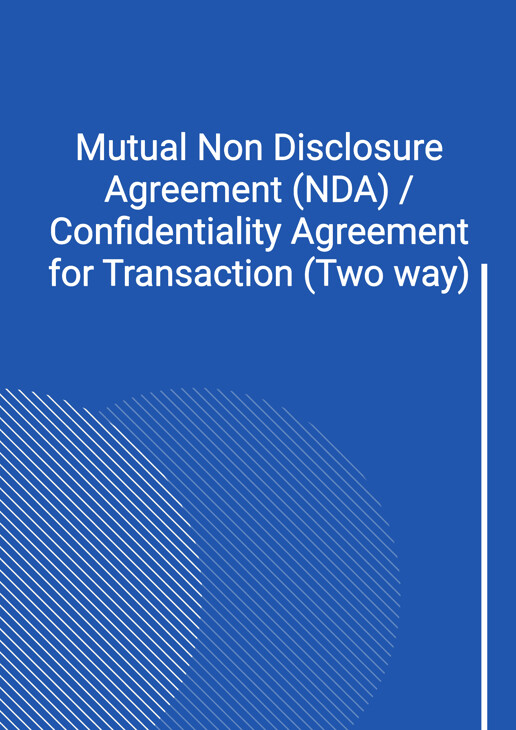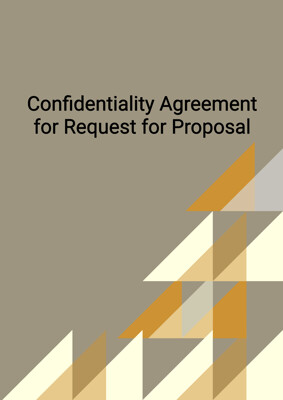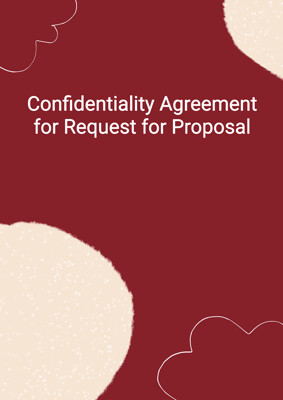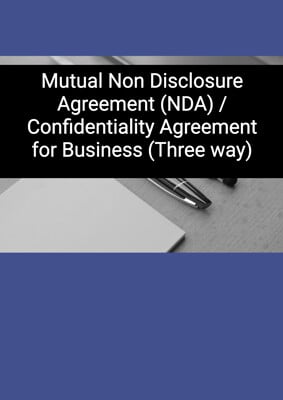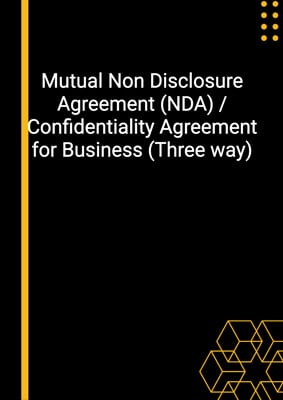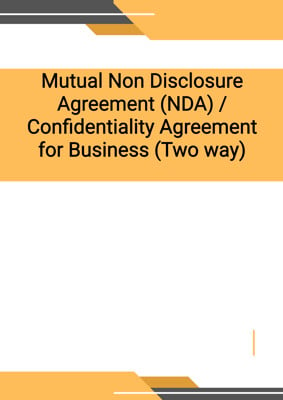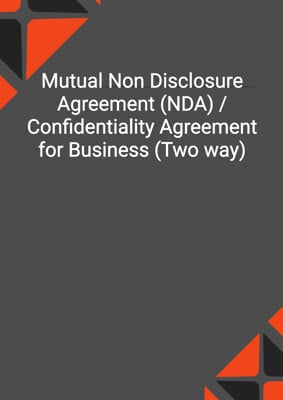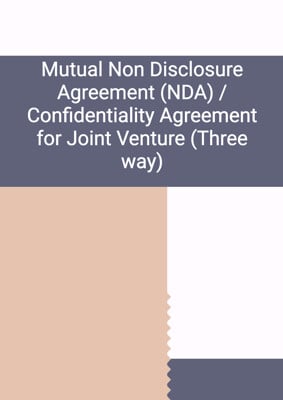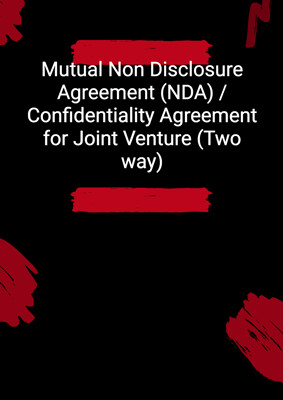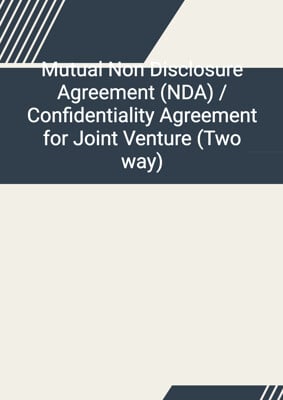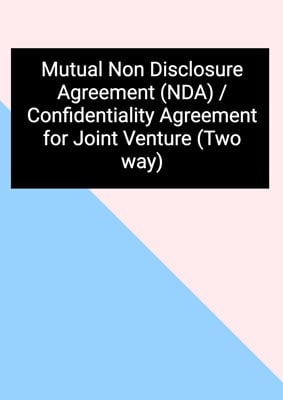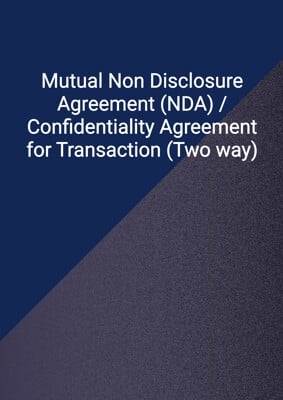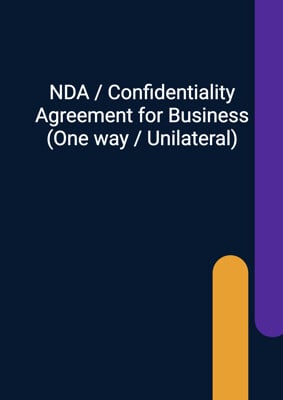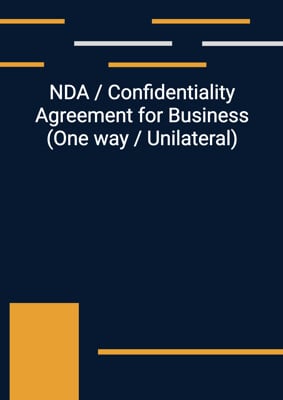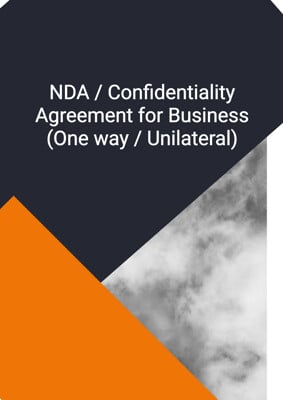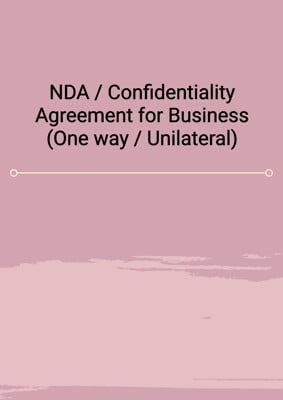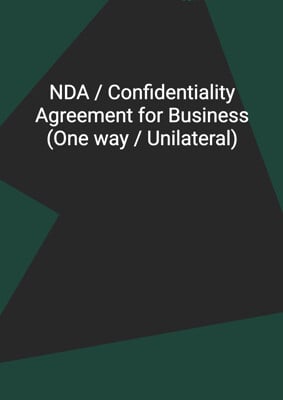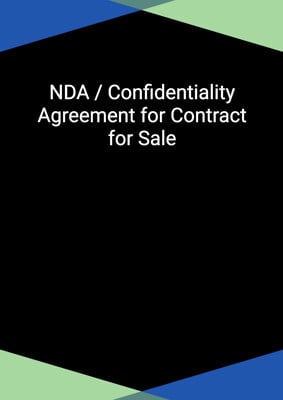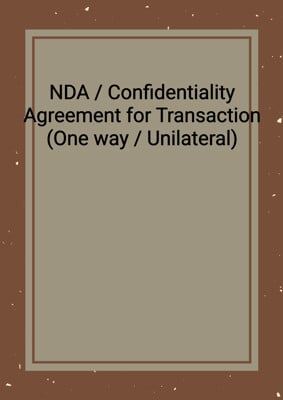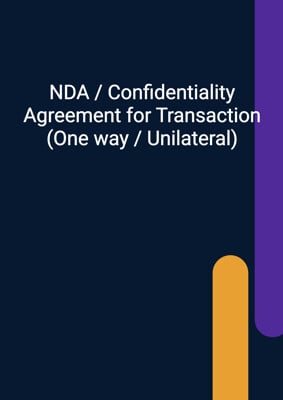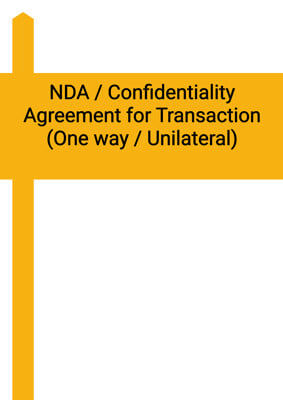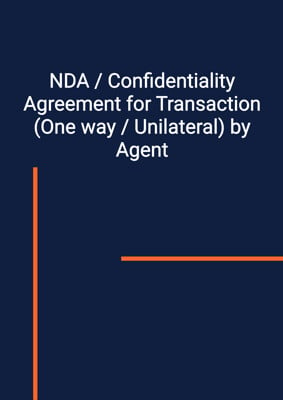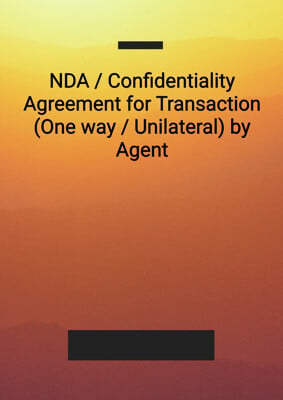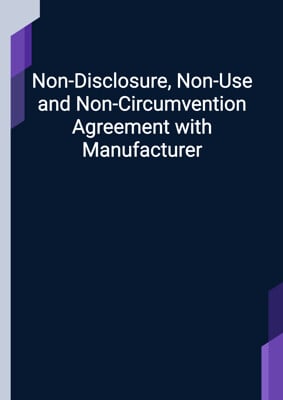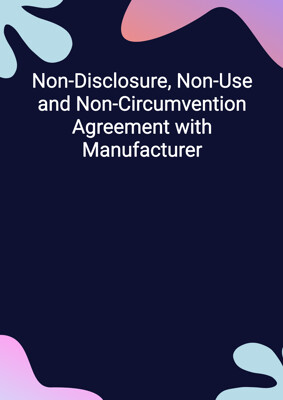How to Tailor the Document for Your Need?
01
Create Document
Fill in the details of the parties. You can click the "Fill with Member’s Information" button to complete it with information saved to your account.
02
Fill Information
Please fill in any additional information by following the step-by-step guide on the left hand side of the preview document and click the "Next" button.
03
Get Document
When you are done, click the "Get Document" button and you can download the document in Word or PDF format.
04
Review Document
Please get all parties to review the document carefully and make any final modifications to ensure that the details are correct before signing the document.
Document Preview
Document Description
The Mutual Non Disclosure Agreement (NDA) / Confidentiality Agreement for Transaction (Two way) is a legal document that establishes a confidential relationship between two parties, Party 1 and Party 2, who are involved in a transaction. The purpose of this agreement is to protect the confidential information that will be exchanged between the parties during the course of the transaction.
The agreement begins with an interpretation section, which defines key terms used throughout the document. This ensures that both parties have a clear understanding of the terminology used.
The obligations of confidentiality are outlined in Section 2. Both parties agree to maintain the confidentiality of the information exchanged and to use it exclusively for the purpose of evaluating the transaction. They are prohibited from copying, reproducing, or storing the information in an externally accessible computer or electronic information retrieval system.
Section 3 outlines the confidentiality measures that both parties must take to protect the disclosed information. This includes limiting access to approved representatives who need the information for the purpose of the transaction, keeping the information separate from other documents and records, and applying appropriate security measures to prevent unauthorized disclosure.
Exceptions to the confidentiality obligations are outlined in Section 4. The parties are not required to keep information confidential if it is already publicly available, previously known to the receiving party, disclosed by a third party, or independently developed by the receiving party.
Section 5 addresses the return of information. Upon request, each party must return or destroy all documents and materials containing the information. However, the obligations of confidentiality continue to apply even after the completion of the purpose or the return of the information.
Section 6 includes disclaimers and warranties. Both parties acknowledge that the information provided may not be complete or accurate, and they agree to waive any liability resulting from the use of the information. However, this does not exclude liability for fraudulent misrepresentation.
Section 7 addresses the confidentiality of the agreement itself. Both parties agree to keep the existence and nature of the agreement confidential and to obtain approval before making any announcements or circulars related to the agreement. The confidentiality obligations continue to apply even after the negotiations are completed.
Section 8 establishes the remedies available in case of a breach of the agreement. The disclosing party is entitled to seek injunctions, specific performance, and other equitable relief.
Section 9 states that any failure to enforce a provision of the agreement does not constitute a waiver of that provision. The rights, powers, and remedies provided in the agreement are cumulative and not exclusive.
Section 10 prohibits the assignment of rights or obligations under the agreement.
Section 11 confirms that the agreement represents the entire agreement between the parties and supersedes any previous agreements or understandings.
Section 12 clarifies that the agreement does not grant any rights to the parties under intellectual property laws.
Section 13 specifies the governing law and jurisdiction that will apply to the agreement.
Section 14 outlines the procedures for giving notices and serving documents under the agreement.
Section 15 clarifies that only the connected persons of the parties have the right to enforce the terms of the agreement, subject to the terms of the governing law and jurisdiction clause and the parties' ability to terminate or vary the agreement with agreement from their connected persons.
The agreement is signed by the authorized representatives of Party 1 and Party 2, indicating their acceptance of the terms and conditions outlined in the document.
How to use this document?
1. Exchange of Information: Both Party 1 and Party 2 should exchange confidential information related to the transaction. This information should be used exclusively for the purpose of evaluating the transaction and should not be disclosed to any unauthorized individuals.
2. Confidentiality Measures: Both parties should take measures to maintain the confidentiality of the exchanged information. This includes limiting access to approved representatives who need the information, keeping the information separate from other documents and records, and applying appropriate security measures to prevent unauthorized disclosure.
3. Exceptions to Confidentiality: Both parties should be aware of the exceptions to the confidentiality obligations. Information that is already publicly available, previously known to the receiving party, disclosed by a third party, or independently developed by the receiving party does not need to be kept confidential.
4. Return or Destruction of Information: Upon request, both parties should return or destroy all documents and materials containing the exchanged information. It is important to certify in writing that all such documents and materials have been destroyed.
5. Disclaimer and Warranty: Both parties should understand that the information exchanged may not be complete or accurate. They should waive any liability resulting from the use of the information, except in cases of fraudulent misrepresentation.
6. Confidentiality of the Agreement: Both parties should keep the existence and nature of the agreement confidential. Any announcements or circulars related to the agreement should be approved by both parties.
7. Remedies for Breach: The disclosing party has the right to seek injunctions, specific performance, and other equitable relief in case of a breach of the agreement.
8. Notices and Service: Any notices or documents related to the agreement should be served in accordance with the specified procedures, including delivery by hand, email, or post.
9. Governing Law and Jurisdiction: The agreement is governed by the specified jurisdiction, and any disputes should be resolved in accordance with the governing law.
10. Rights under Contracts for Third Parties: Only the connected persons of the parties have the right to enforce the terms of the agreement, subject to the terms of the governing law and jurisdiction clause and the parties' ability to terminate or vary the agreement with agreement from their connected persons.
Not the right document?
Don’t worry, we have thousands of documents for you to choose from:
